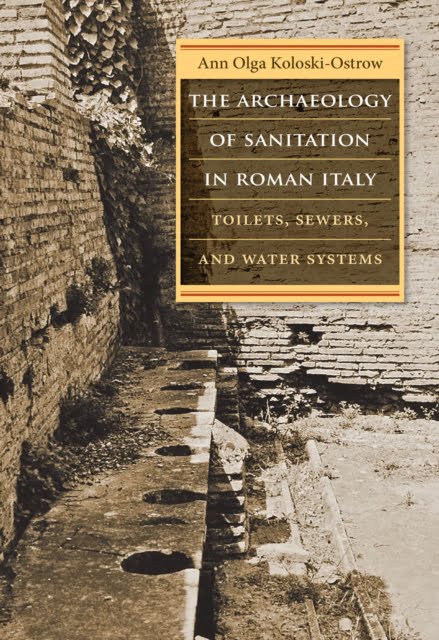 I wish I could remember who recommended this book to me. It's not something that I'd usually choose to read, but it was surprisingly interesting.
I wish I could remember who recommended this book to me. It's not something that I'd usually choose to read, but it was surprisingly interesting.
How did Romans take a shit? That's at the heart of this book. Not just the how - but the why, the when, and the where. How did foreign toilet habits influence the state? Was hygiene properly understood? What are the limits of Roman engineering.
The book is interesting without being particularly entertaining. This isn't a Mary Roach style wander through the street of Pompei - it's a fairly dry scholarly work. It's also - like many academic eBooks - poorly formatted; all the figures and illustrations are placed at the end rather than being integrated with the text. It also doesn't distinguish between citations and footnotes, which can make reading it a bit wearisome.
It is full of curious little asides. As well as finding out that the Bocca della Veritá is probably a sewer cover (ew!) there's also this:
A rather startling anecdote in Aelian’s De natura animalium illustrates the perceived inherent danger that threatened when a house was connected to the public sewer. According to the tale, each night an octopus swam up through a house drain in the toilet, accessed a pantry, and ate the pickled fish stored there by Iberian merchants. As octopi are saltwater creatures, it is hard to believe that they could survive in a Roman sewer for very long, but the story would have raised eyebrows about sewer connections.
It also revealed to me just how much I didn't know about Roman culture.
From birth the Roman male was to be subjected to sensual deprivation, on the one hand, and strong bodily manipulation on the other. Not only were the nose and the back of the head of male Roman babies manually shaped on a daily basis by nurses or mothers, but their penises as well were regularly manipulated to stretch the foreskin.
O...K...
Ultimately, it's a fascinating look at just how sanitation came to be embedded in the empire, its limits, and the politics which made it possible. And lots of discussion about ancient graffiti!
Obligatory "Life of Brian" quote
REG: What have the Romans ever given us in return?
XERXES: The aqueduct?
REG: What?
XERXES: The aqueduct.
REG: Oh. Yeah, yeah. They did give us that. Uh, that's true. Yeah.
COMMANDO: And the sanitation.
LORETTA: Oh, yeah, the sanitation, Reg. Remember what the city used to be like?
REG: Yeah. All right. I'll grant you the aqueduct and the sanitation are two things that the Romans have done.
True!
2 thoughts on “Book Review: "The Archaeology of Sanitation in Roman Italy: Toilets, Sewers, and Water Systems" by Ann Olga Koloski-Ostrow”
@Edent that is roughly 1000% my kind of book and I’m just sad I have no time for it because there are so many other 1000% my kind of books out there to read…
| Reply to original comment on social.coop
@Edent Oh! I recently read 'a history of the world in eight plagues' and it was both not the kind of book I would usually select and also absolutely fascinating. 10 out of 10.
| Reply to original comment on mastodon.ie
More comments on Mastodon.